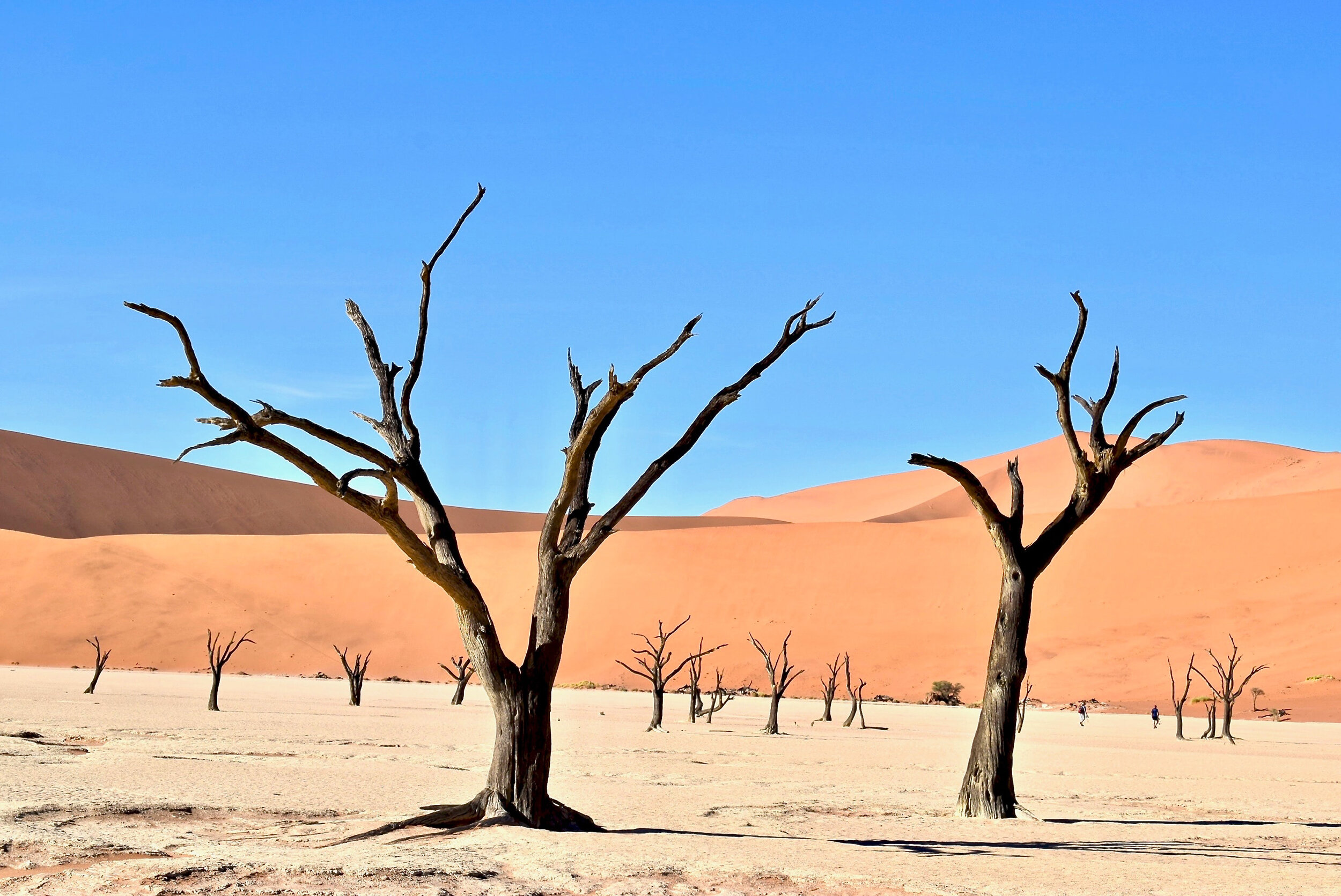
Namibia

The capital Windhoek and coastal town of Swakopmund are influenced by German colonial-era buildings, language and culture.
Etosha National Park is the greatest wildlife sanctuary in Namibia and is made up of grasslands and woodland savanna and dominated by a giant salt pan. It holds one of the largest, and perhaps the most stable, population of black rhino in the world.
Travelling north, mountainous Damaraland, home to desert-adapted elephant, boarders the Skeleton Coast National Park. Many shipwrecks can be found here due to the dangerous current of the sea in this region. Other national parks are the Waterberg National Park and the Cape Cross Seal reserve, home to one of the biggest seal colonies in the world. The northern Kunene Region is where the semi nomadic Himba people live and where the magnificent Epupa Falls prevail. The luscious tropical Caprivi Strip is a long, narrow extension of Namibia and is sandwiched between Angola and Botswana and stretches to the borders of Zambia and Zimbabwe. Camps and lodges are of an exceptional standard.
Guidelines On Climate
Namibia has 4 distinct natural regions: the wide belt of the Namib desert, the semi-arid mountainous plateau, the low lying areas in the North and South-east, and the bush covered plains to the north of the Etosha Pans. The climate is typical of a semi-desert country, with hot days and cool nights. Rainfall occurs exclusively in the summer months, between November and February, when heavy thunderstorms can be expected. Summer is very hot and the Namib Desert temperatures are often above 40oC (104oF). The coast is cooler and often foggy. The best time to visit is during the winter months from March to October as days are warm and dry, and wildlife easier to spot as they tend to congregate at waterholes. Nights can be very cold with frost.
